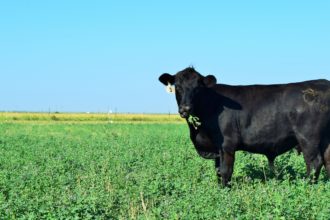Texas plays a major role in agriculture, especially in the beef industry. Cattle production is crucial to the Texas High Plains agriculture community, but production systems that jeopardize the sustainability of water use through the continued depletion of the Ogallala Aquifer put the industry and the vitality of rural communities at risk.
Forage-based livestock systems have proven to be economical and resource-efficient methods for High Plains agriculture. Long-term integrated crop/livestock systems help reduce overall water use and preserve soil health while maintaining marketable weight for animals that are proving profitable for farmers.
Integrating winter cover crops with summer forage crops could maximize land productivity and system profitability by improving water infiltration, stabilizing soils, and increasing additional potential income channels. However, adoption of cover crops has been slow because of concerns that cover crops withdraw soil water to the detriment of the summer crop, and they may not generate immediate economic benefits.
In a Southern SARE-funded Graduate Student Grant (GS15-152), “Evaluation of Winter Annual Cover Crops Under Multiple Residue Management: Impacts on land management, soil water depletion, and cash crop productivity,” Texas Tech University researchers investigated five cover crops species as potential complements to a warm-season beef-stocker grazing system. The impact of the project was two-fold: Stabilize the soil surface from excessive wind erosion and desiccation; and strengthen rural communities by ensuring the persistence of profitable agriculture in the region.
Want more information? See the related SARE grant:
